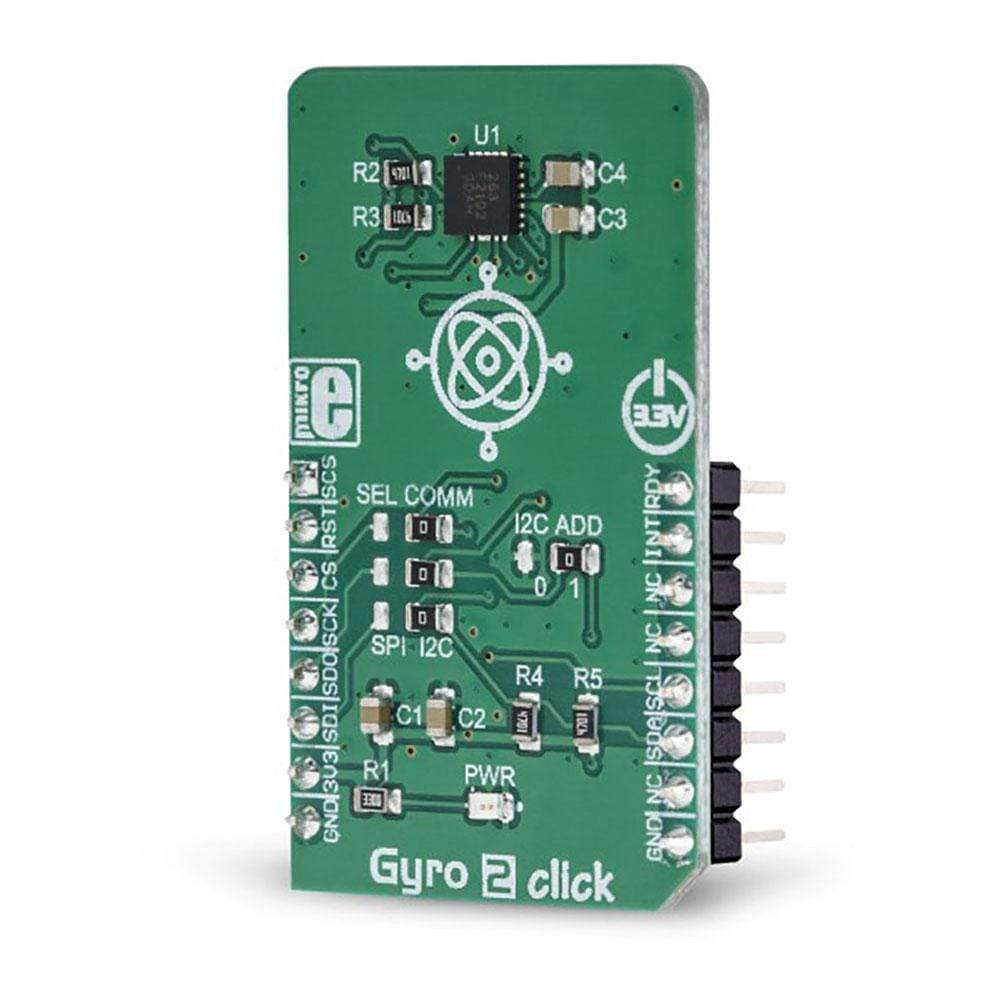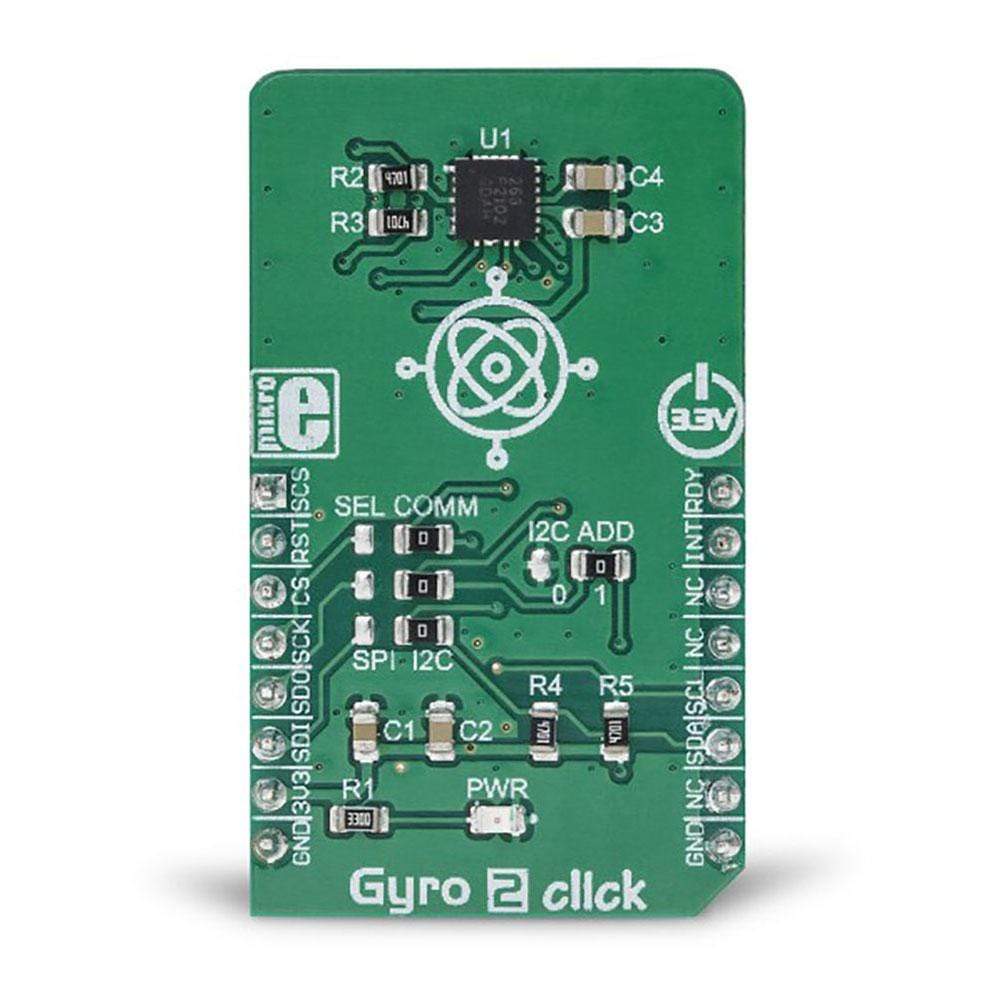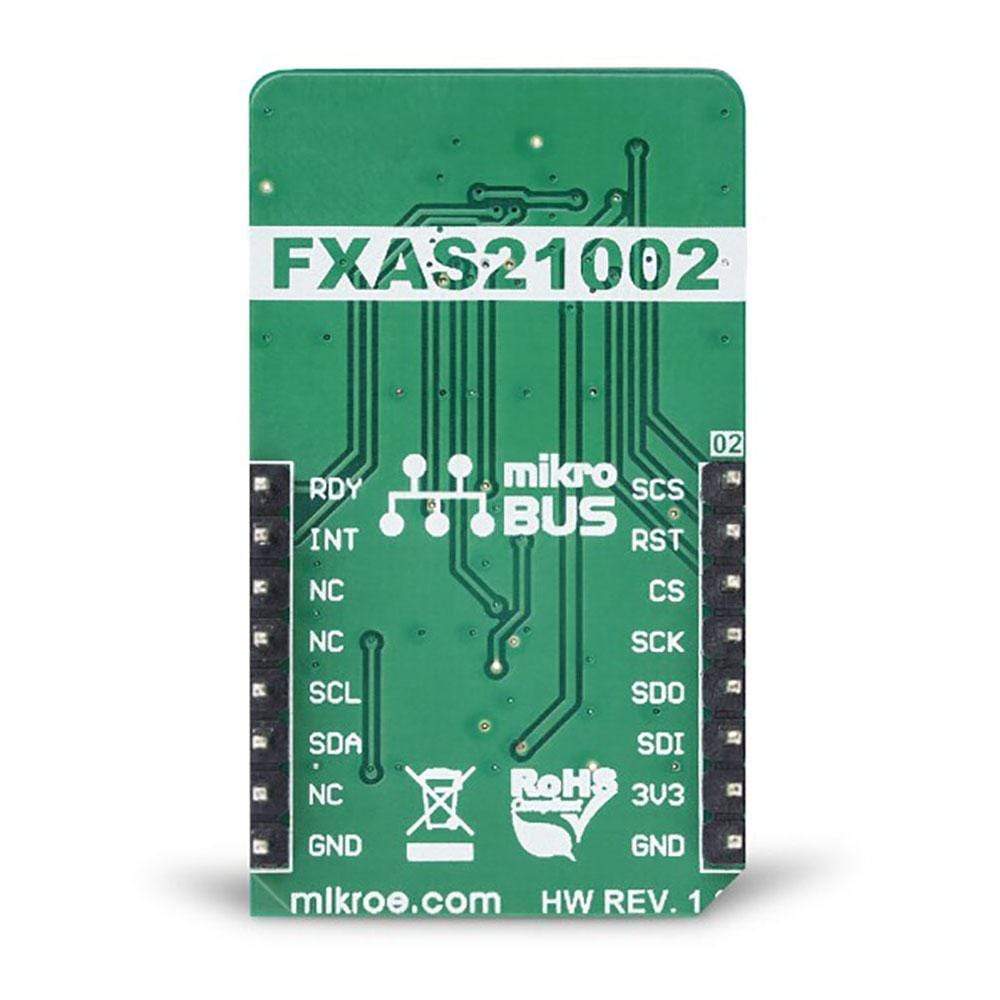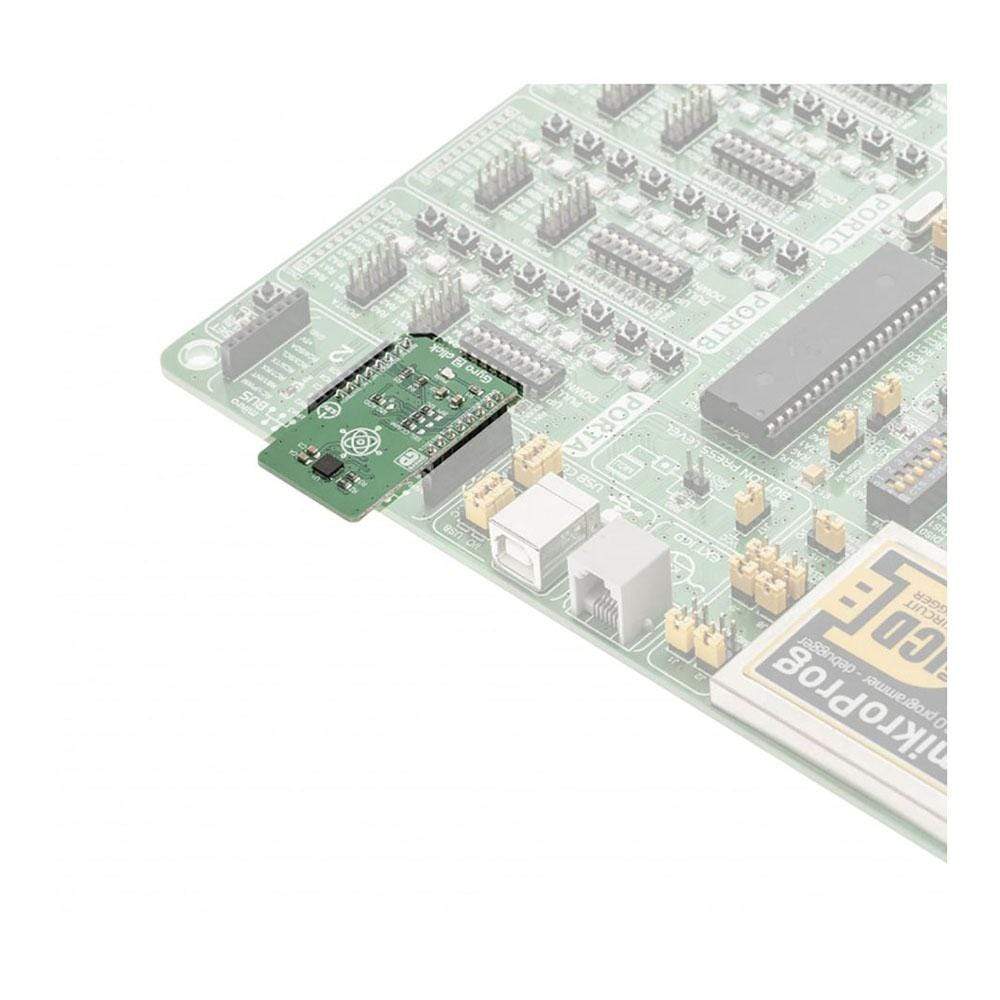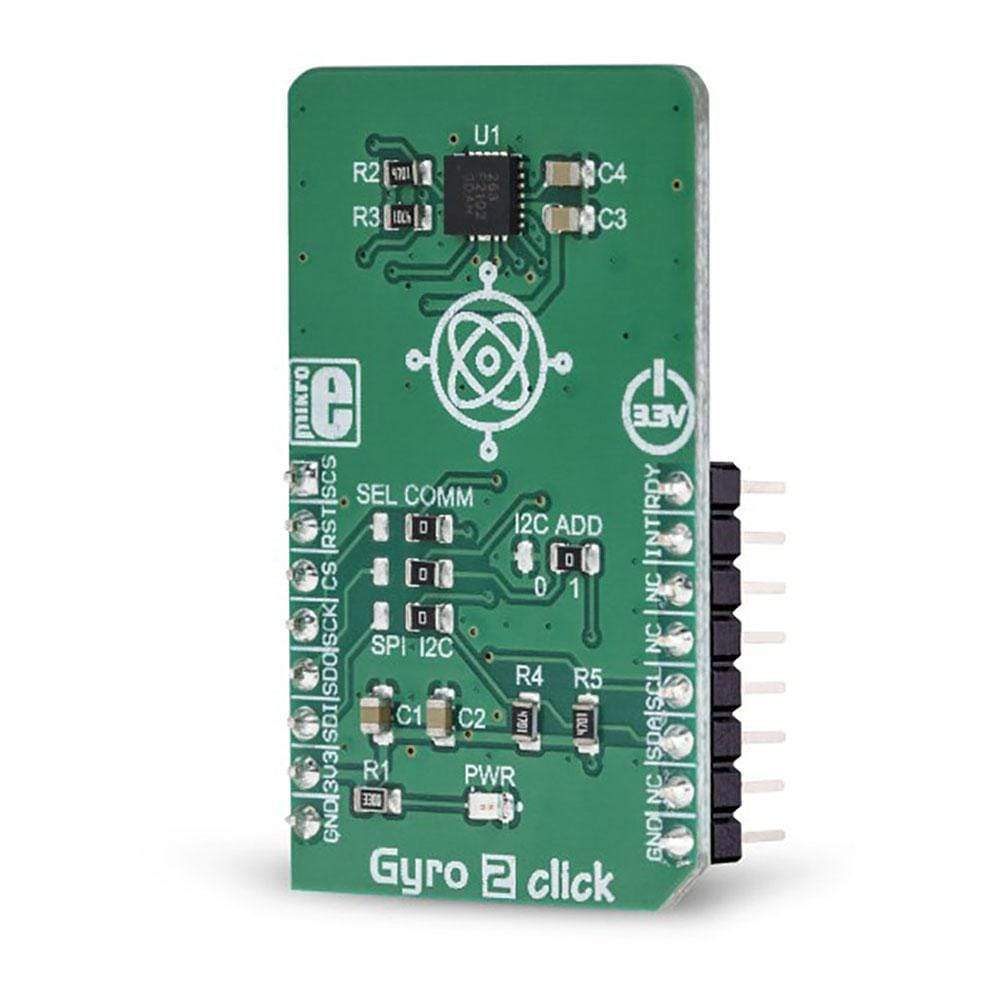
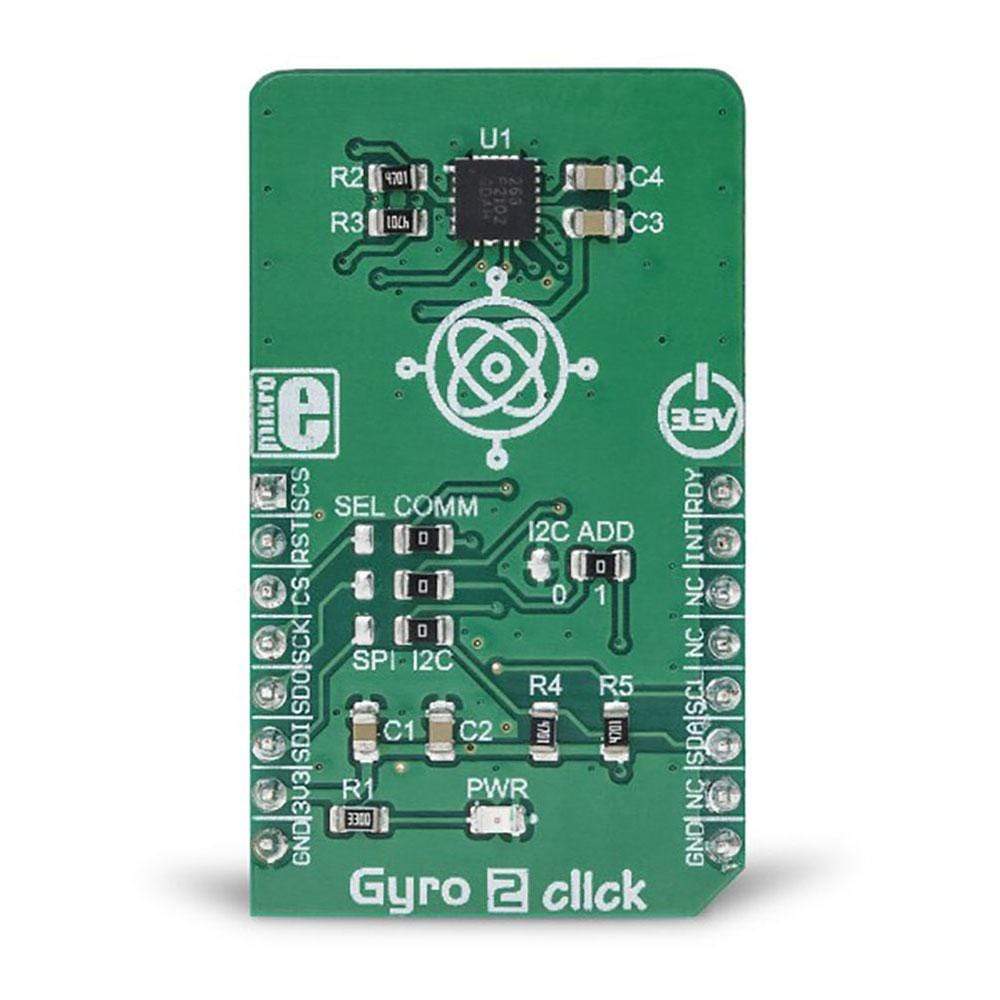
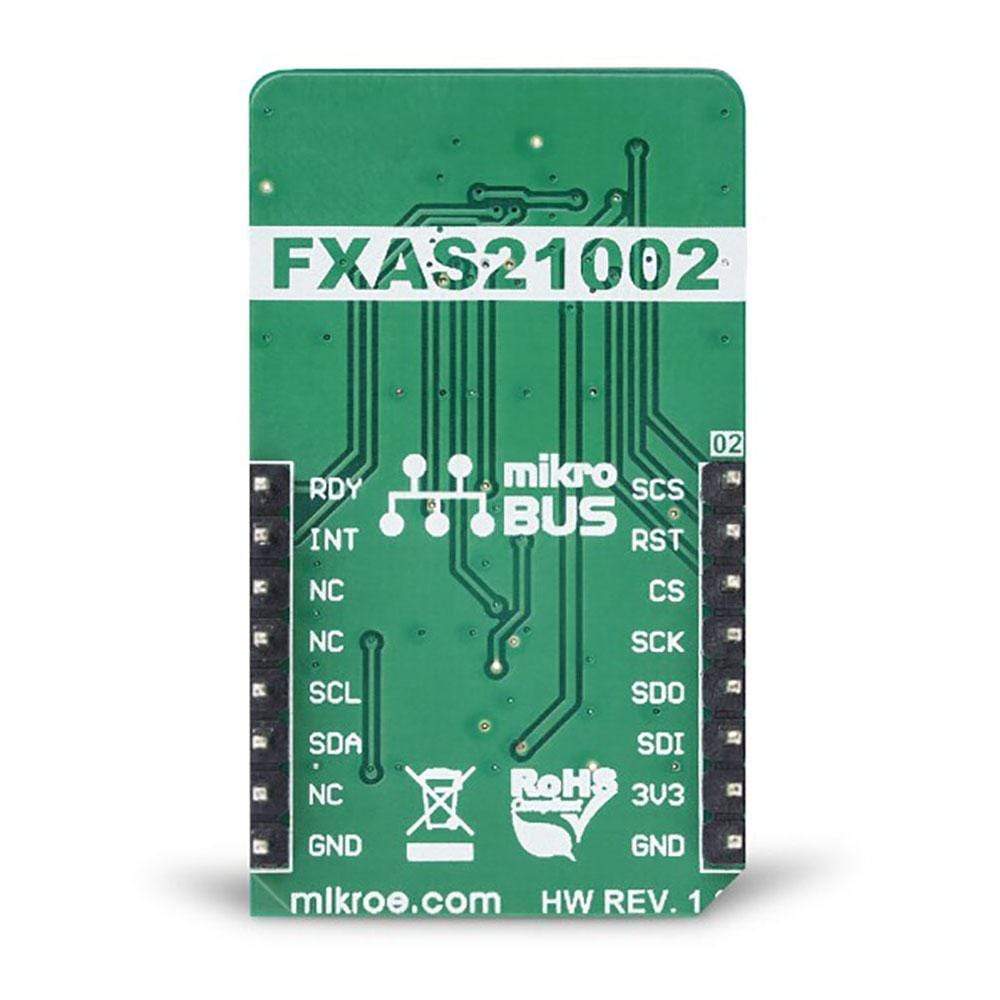
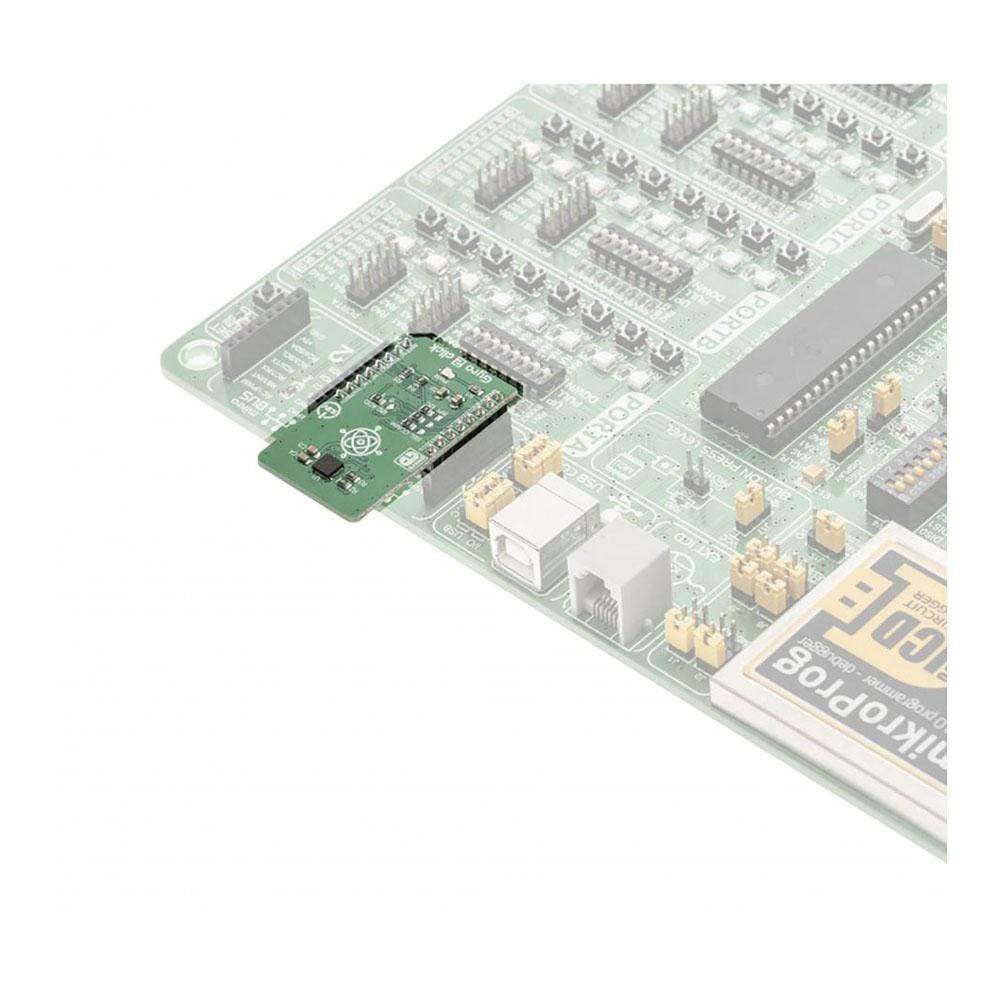
Overview
The Gyro 2 Click Board™ is a three-axis digital angular rate sensor that can sense the angular movement and velocity in three perpendicular axes. The Click Board™ is equipped with the FXAS21002C, a three-axis integrated angular rate gyroscope. This gyroscope IC features a very good sensitivity-to-range ratio, allowing it to achieve the resolution of 0.0625 °/s while operating in the ±2000 °/s Full-Scale Range (FSR) mode.
The full-scale range can be dynamically changed in several discrete steps, providing optimal performance for the application-specific conditions: lower FSR results in enhanced sensitivity
Downloads
Das Gyro 2 Click Board™ ist ein dreiachsiger digitaler Winkelgeschwindigkeitssensor, der die Winkelbewegung und Geschwindigkeit in drei senkrechten Achsen erfassen kann. Das Click Board™ ist mit dem FXAS21002C ausgestattet, einem dreiachsigen integrierten Winkelgeschwindigkeitsgyroskop. Dieser Gyroskop-IC verfügt über ein sehr gutes Empfindlichkeits-Reichweiten-Verhältnis, sodass er im FSR-Modus (Full-Scale Range) von ±2000 °/s eine Auflösung von 0,0625 °/s erreichen kann.
Der Vollausschlagsbereich kann dynamisch in mehreren diskreten Schritten geändert werden, um eine optimale Leistung für die anwendungsspezifischen Bedingungen zu erzielen: Ein niedrigerer FSR führt zu einer verbesserten Empfindlichkeit
| General Information | |
|---|---|
Part Number (SKU) |
MIKROE-3300
|
Manufacturer |
|
| Physical and Mechanical | |
Weight |
0.019 kg
|
| Other | |
Country of Origin |
|
HS Code Customs Tariff code
|
|
EAN |
8606018714155
|
Warranty |
|
Frequently Asked Questions
Have a Question?
Be the first to ask a question about this.

